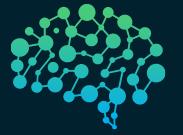What is Generative AI?
Generative Artificial Intelligence (Generative AI) stands at the forefront of technological innovation, reshaping our understanding of machine intelligence. This article embarks on a journey through the evolution, capabilities, applications, ethical considerations, and future prospects of generative AI. By the end, readers will gain profound insight into this groundbreaking technology.
Foundations of Generative AI
Machine Learning and Neural Networks
At its core, generative AI leverages the power of machine learning and neural networks. These systems are designed to learn patterns and relationships within vast datasets, enabling machines to mimic human-like behaviors.
The Transformer Architecture
The Transformer architecture serves as the backbone for many generative AI models. Its ability to capture long-range dependencies in data makes it particularly effective in understanding context, a crucial aspect of generating coherent and relevant content.
Key Generative AI Models
GPT-3 (Generative Pre-trained Transformer 3)
GPT-3 has emerged as a cornerstone in the realm of generative AI. With its massive scale and pre-training on diverse internet texts, GPT-3 showcases the potential of generative models to generate high-quality, contextually aware content.
Variational Autoencoders (VAEs) and Generative Adversarial Networks (GANs)
Beyond GPT-3, other models like VAEs and GANs contribute to the versatility of generative AI. VAEs focus on learning latent representations, while GANs excel at generating data by pitting two neural networks against each other.
How to Check Your Laptop’s Graphics Card Window 11
Applications of Generative AI
Natural Language Generation (NLG)
Generative AI excels in NLG, empowering machines to generate human-like text. This capability finds applications in content creation, chatbots, and automated summarization.
Image Synthesis and Style Transfer
In the visual domain, generative AI models can synthesize images and perform style transfer, allowing for the creation of unique and artistic visuals.
Music and Creative Arts Generation
The creative potential of generative AI extends to music and other forms of art, enabling machines to compose music, generate paintings, and even produce poetry.
Code Generation and Programming Assistance
Developers benefit from generative AI in code generation, where models assist in automating certain aspects of programming, enhancing efficiency in software development.
Challenges and Ethical Considerations
Biases in Training Data
Generative AI models are susceptible to biases present in their training data, raising concerns about fairness and representation in the content they generate.
Deepfakes and Misuse Potential
The ability to generate realistic content poses challenges in the realm of deepfakes, where malicious actors could misuse generative AI for deceptive purposes.
AI Impact on Judiciary: Transformation, Challenges, and Opportunities
Addressing Ethical Concerns in AI Research
The ethical considerations surrounding generative AI require a concerted effort from researchers, policymakers, and industry stakeholders to establish guidelines and frameworks that prioritize responsible use.
Generative AI in Industry
Healthcare: Diagnostics and Drug Discovery
In healthcare, generative AI contributes to diagnosis by analyzing medical images and aids in drug discovery by predicting potential drug candidates.
Marketing and Content Creation
Marketing strategies benefit from generative AI in content creation, which enables the generation of personalized and engaging marketing materials.
Gaming and Virtual Environments
Generative AI enhances the gaming experience by creating realistic environments, characters, and narratives, providing players with immersive and dynamic gameplay.
Robotics and Automation
In robotics and automation, generative AI plays a pivotal role in tasks such as path planning, object recognition, and autonomous decision-making.
Case Studies
Real-world examples showcasing the impact of Generative AI
- Text Generation for Content Marketing
- [Case Study]: A leading content marketing agency increased productivity by 30% through the use of a Generative AI model for creating blog posts and social media content.
- Image Synthesis in Fashion Design
- [Case Study]: A fashion design studio utilized Generative AI to generate diverse design concepts, accelerating the creative process and expanding their product range.
- Medical Image Analysis for Diagnosis
- [Case Study]: A healthcare institution improved diagnostic accuracy by implementing a Generative AI model for analyzing medical imaging data, leading to more efficient patient care.
Future Trends and Developments
Continued Research and Advancements
The field of generative AI is dynamic, with ongoing research focusing on refining existing models, developing novel architectures, and exploring new applications.
Integration with Other Technologies
Generative AI is increasingly integrated with other technologies, such as augmented reality (AR) and virtual reality (VR), creating more immersive and interactive experiences.
The Technology Behind ChatGPT 3.5
Potential Societal and Economic Impacts
As generative AI continues to evolve, its societal and economic impacts are expected to be profound, influencing industries, job markets, and daily life.
In conclusion, generative AI has surpassed mere technological novelty, becoming an integral part of our digital landscape. Its applications are diverse and far-reaching, from shaping creative endeavors to revolutionizing industries. However, as we celebrate its achievements, it is imperative to navigate the ethical considerations and challenges to ensure a responsible and equitable integration of generative AI into our society.

